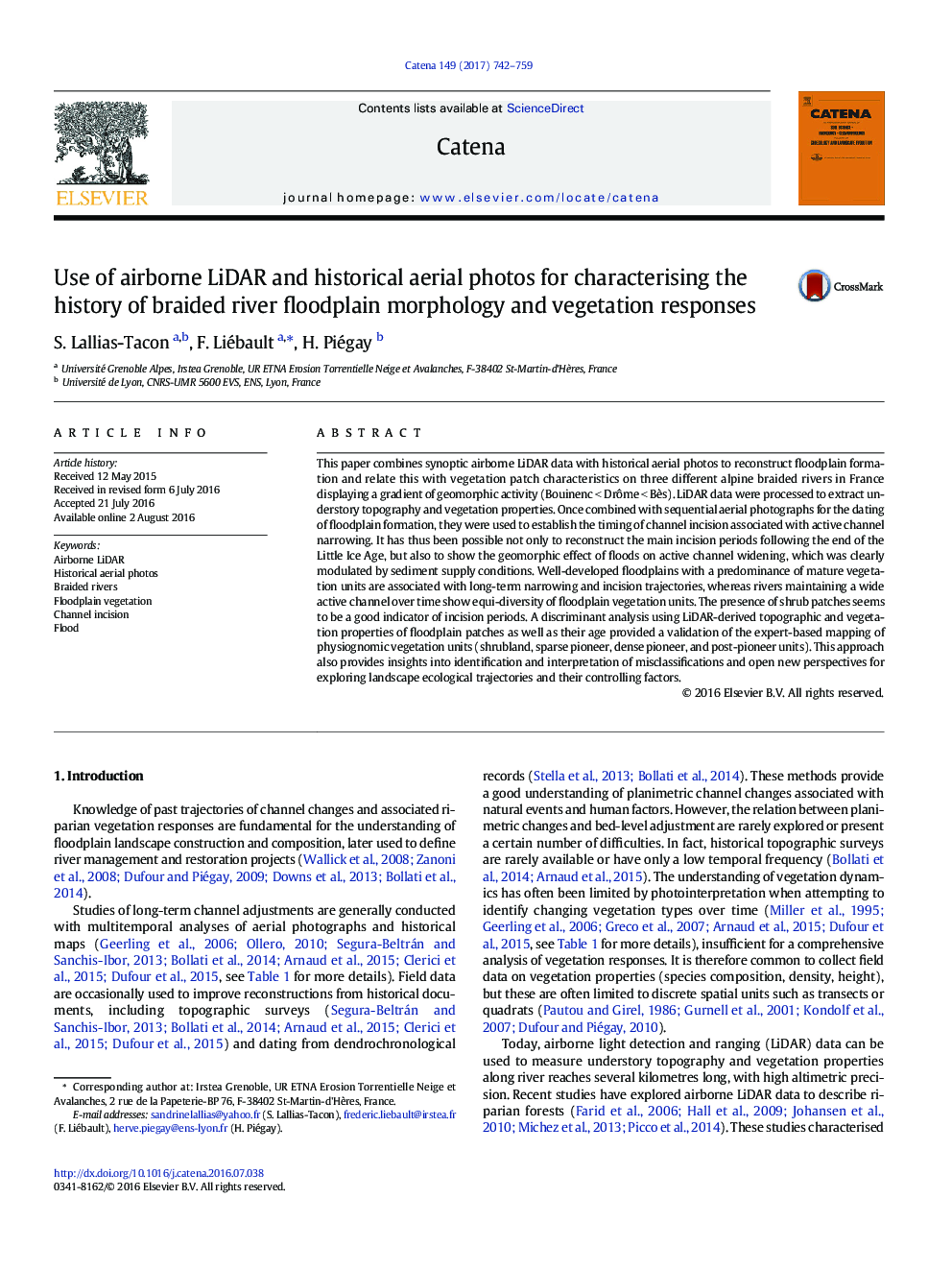| کد مقاله | کد نشریه | سال انتشار | مقاله انگلیسی | نسخه تمام متن |
|---|---|---|---|---|
| 5770106 | 1413272 | 2017 | 18 صفحه PDF | دانلود رایگان |

- We combine airborne light detection and ranging data with historical aerial photos.
- We relate floodplain formation with vegetation patch characteristics.
- This methodology reconstructs timing of channel incision of three braided rivers.
- Long-term changes play a significant role in explaining vegetation mosaics.
- Presence of shrub patches is a good indicator of incision periods.
This paper combines synoptic airborne LiDAR data with historical aerial photos to reconstruct floodplain formation and relate this with vegetation patch characteristics on three different alpine braided rivers in France displaying a gradient of geomorphic activity (Bouinenc < Drôme < Bès). LiDAR data were processed to extract understory topography and vegetation properties. Once combined with sequential aerial photographs for the dating of floodplain formation, they were used to establish the timing of channel incision associated with active channel narrowing. It has thus been possible not only to reconstruct the main incision periods following the end of the Little Ice Age, but also to show the geomorphic effect of floods on active channel widening, which was clearly modulated by sediment supply conditions. Well-developed floodplains with a predominance of mature vegetation units are associated with long-term narrowing and incision trajectories, whereas rivers maintaining a wide active channel over time show equi-diversity of floodplain vegetation units. The presence of shrub patches seems to be a good indicator of incision periods. A discriminant analysis using LiDAR-derived topographic and vegetation properties of floodplain patches as well as their age provided a validation of the expert-based mapping of physiognomic vegetation units (shrubland, sparse pioneer, dense pioneer, and post-pioneer units). This approach also provides insights into identification and interpretation of misclassifications and open new perspectives for exploring landscape ecological trajectories and their controlling factors.
Journal: CATENA - Volume 149, Part 3, February 2017, Pages 742-759